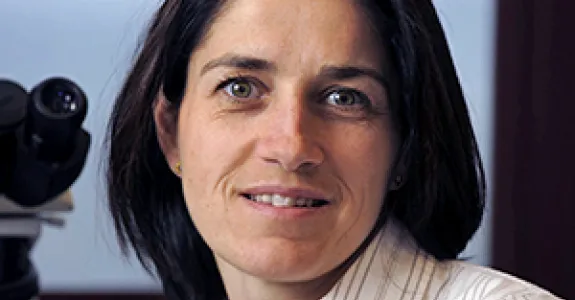
Cellular replication is a defining feature of life. But how do cells reproduce themselves? Dr. Christine Jacobs-Wagner's laboratory addresses this fundamental question by probing the governing principles and the spatiotemporal mechanisms that underlie cellular replication, with an emphasis of cell morphogenesis, cell growth, chromosome dynamics and cell cycle regulation. They use bacteria as model systems for two main reasons. First, bacteria lack the complex control systems of eukaryotes (e.g., cyclin/Cdk machinery); yet their multiplication process is remarkably efficient and faithful. Therefore, their study will help identify the core mechanisms involved in cellular replication. Second, bacteria have an immense impact on humans, including our health. Understanding how bacteria multiply will provide a basis for the rational design of new therapeutics and for the creative use of bacteria in medicine, industry, and the environment.
The Jacobs-Wagner lab primarily uses three model systems: Escherichia coli, Caulobacter crescentus and the Lyme disease agent Borrelia burgdorferi. Each model has distinct advantages. There is a wealth of knowledge on E. coli and studies are facilitated by the availability of large collections of strains, tools and databases. The highly polarized dimorphic C. crescentus provides a unique set of strengths for addressing questions pertinent to positional and temporal information. With the human pathogen B. burgdorferi, we investigate how unusual properties in bacterial growth and replication contribute to pathogenesis and disease.
Cellular life cannot be sustained and propagated without temporal and spatial organization. This also applies to bacteria, as they display polarity, possess a cytoskeleton, order their chromosomes in space, localize proteins, and depend critically on this surprisingly sophisticated cellular organization. The Jacobs-Wagner laboratory addresses the molecular and physical mechanisms involved in the internal organization of bacteria at several levels, from its origin, maintenance and replication in time and space to its function in cellular physiology and morphogenesis.
All the processes they study depend on the physical and chemical properties of the cell. In recent years, they discovered that the bacterial cytoplasm does not behave as a simple (viscous) fluid. Instead, it exhibits non-linear dynamics. These dynamics arise from the nature of the cytoplasm: it is a chemically complex material, crowded by long entangled polymers, compact polymers, aggregates and solutes. The lab investigates how the physical and chemical properties of the cytoplasm impact intracellular organization and processes essential for cellular replication. Their ultimate goal is to obtain a complete mechanistic understanding that integrates the spatiotemporal and physicochemical information of the cell.
For their studies, they use an interdisciplinary approach that combines genetics, genomics, and biochemistry with a battery of quantitative single-cell and single-molecule microscopy techniques. A large part of the Jacobs-Wagner lab's current effort is to improve our knowledge of the inventory of components involved in cellular replication and to characterize the function and interplay of known components and processes. To this end, they also develop new image analysis tools and mathematical models.


